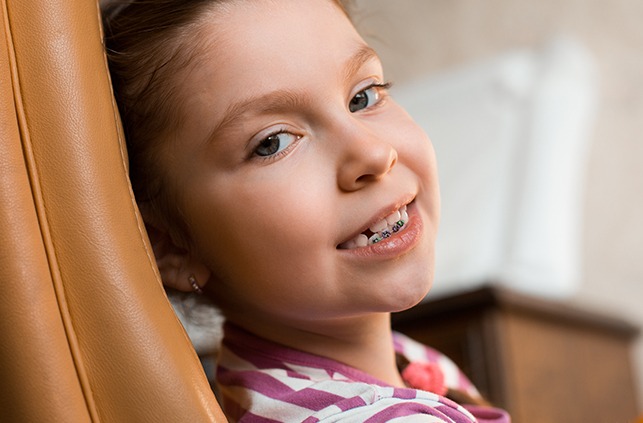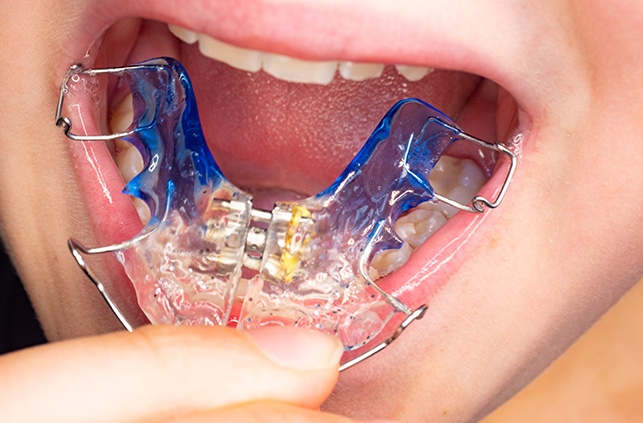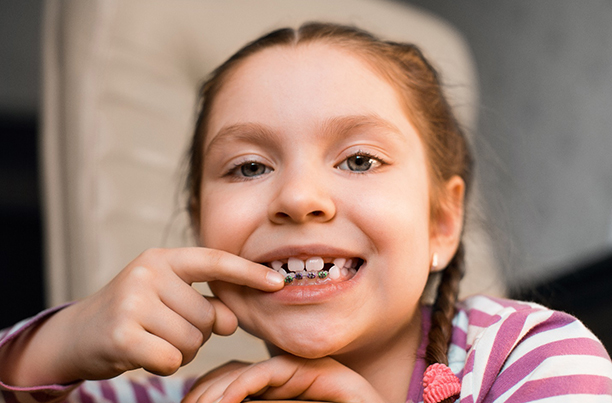Pediatric Orthodontics – Worcester, MA
Preparing and Protecting Your Child’s Developing Smile

When you take care of your child’s oral health in the early stages of their life, you can really make a difference in reducing their oral healthcare costs as adults. It’s particularly true for problems that orthodontics can fix, including misalignment. Keep in mind that these problems are much easier to treat when they are young and their teeth and jaws are still developing. Dr. Moon provides pediatric orthodontics in our Worcester, MA orthodontic office that can make a real positive impact on their smile during these essential early years. Give our orthodontic office a call to schedule an appointment once they reach the age of seven, which is a common age for orthodontic problems to appear, and we’ll confirm which treatment can best help them!
What is Pediatric Orthodontics?

Another term for pediatric orthodontics is Phase 1 orthodontics. The idea behind it is actually quite simple. We deal with orthodontic problems in the early stages in order to prevent fewer complications later in life. We mainly target problems that can lead to overcrowding, misalignment, and bite problems. Additionally, we’ll help your child end any poor habits they may still be performing to alleviate anxiety or nervousness, such as thumb-sucking. In order to make enough room for future teeth to erupt, we can also adjust already-existing teeth in their smile. This is done during their initial consultation, which also gives us a chance to examine the growth patterns of their teeth and jaw.
What Treatments are Used in Pediatric Orthodontics?

In most Phase 1 treatments, you can expect them to take between 9 and 12 months. This is significantly shorter than what you’d expect from traditional options. Keep in mind that your child may need a headgear or similar orthodontic appliance to make the right adjustments to their jaw and teeth. They may also need limited-phase braces, which do not require nearly as much time to provide results as traditional braces. Other Phase 1 treatments our orthodontic office provides includes specialized retainers and space maintainers. We’ll make sure that each treatment is fully customized to address your child’s orthodontic concerns.
What Benefits Can I Expect from Pediatric Orthodontics?

There are many reasons to start orthodontic sooner, rather than later. While not all children will need early intervention, when we recommend it, it’s because we believe we can keep the gaps leftover from baby teeth to stay open so there’s room for permanent teeth to erupt. Additionally, pediatric orthodontics can help your child avoid other developmental issues tied to the mouth. This includes speech impediments, keeping the upper and lower arches aligned correctly, and improving the overall appearance of their smile.
Pediatric Orthodontics FAQs

If you’re interested in learning more about pediatric orthodontics, good news: you’re in the right place! Below, we’re answering some of the most common questions – from whether pediatric orthodontics is painful to how it will affect your child’s day-to-day life. Of course, if your question isn’t listed below, you can give us a call directly as well.
Is Pediatric Orthodontics Painful?
Usually, there is a bit of soreness as your child’s teeth move into their ideal positions. Fortunately, there are several ways to combat this, resulting in pain-free orthodontic treatment. First, encourage your child to stick to soft foods when their teeth feel sore. Additionally, have them place a cold compress against the outside of their cheek for 10 minutes at a time. If that doesn’t work, then you can also give them an OTC pain reliever for children as directed.
Does Pediatric Orthodontics Affect Diet & Nutrition?
That depends! If your child’s orthodontic appliance is removable, then they can continue to eat all of their favorite foods. If, on the other hand, they have a palate expander or braces, they will need to adjust their diet to avoid an orthodontic emergency. A few foods that they should temporarily remove from their diet include raw nuts, thin pizza crust, tortilla chips, popcorn, and crunchy vegetables. The good news is that there are lots of nutrient-dense, delicious foods that are softer in consistency, like scrambled eggs, oatmeal, plain yogurt, and kiwi.
What Changes Should My Child Make While Wearing Braces?
There are a few things we recommend outside of the previously mentioned dietary restrictions. First, if your child doesn’t already have a solid oral hygiene regimen in place, now is the time to implement one! In addition to brushing their teeth twice a day, they should be flossing each evening and cleaning their orthodontic appliance as directed. Furthermore, they should drink lots of water throughout the day to prevent dry mouth and use dental wax to prevent soft tissue irritation.
Is it Okay for a Child to Play Sports While Wearing Braces?
Fortunately, the large majority of children can continue to play sports with braces. The one “rule” is that they must wear a mouthguard during games and practices. If they don’t, then their teeth and their orthodontic appliance could get damaged, warranting an immediate visit to our Worcester dental office.
How Do I Know My Child Needs Pediatric Orthodontics?
If your child’s teeth are overcrowded, they breathe through their mouth instead of their nose, they are having trouble chewing, or their bite isn’t aligned properly, then there’s a chance that they need pediatric orthodontics. The American Association of Orthodontists recommends bringing your child in for an exam with an orthodontist by the age of seven for that very reason.
What Happens After Phase 1 Orthodontics?
The answer is a bit different for each patient! If your child’s needs were fully addressed with pediatric orthodontics, then there may not be any follow-up. Conversely, there are some cases where phase 2 treatment is needed to correct issues with their permanent teeth.
